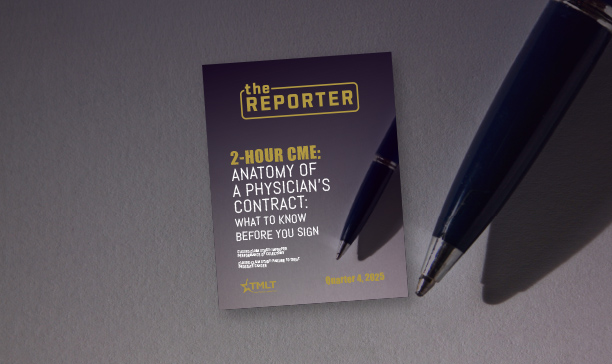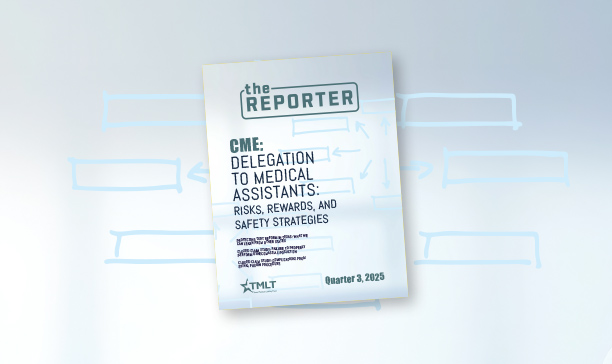Failure to recognize and treat pneumothorax
A 35-year-old man came to a bariatric surgeon for consultation. The patient was 5’11” and weighed 301 pounds. He reported back pain, difficulty walking, joint pain and swelling, asthma, shortness of breath, and GERD.
Presentation
A 35-year-old man came to a bariatric surgeon for consultation. The patient was 5’11” and weighed 301 pounds. He reported back pain, difficulty walking, joint pain and swelling, asthma, shortness of breath, and GERD.
Physician action
The bariatric surgeon recommended a laparoscopic sleeve gastrectomy and referred the patient to a nutritionist and a psychologist for preoperative testing. The surgery — which would be performed at a local hospital via a robotic surgical system — was scheduled for July 19.
Anesthesiologist A performed a preoperative assessment of the patient at 11:25 a.m. and anesthesia was started at 11:51 a.m. The procedure began at 12:28 p.m. The patient was placed in a steep reverse Trendelenburg position and three trocars were placed.
According to the anesthesia notes, the patient’s vital signs changed at 1:04 p.m. His heart rate increased, and his peak inspiratory pressure (PIP) rose to 43. At 1:06, PIP increased to 50; at 1:09, the PIP was in the 60s; at 1:12, the patient’s heart rate dropped to 75, and his pulse pressure narrowed. Between 1:13 and 1:16, the patient’s PIP was at 68, his heart rate dropped to the 50s, and his blood pressure was erratic.
Anesthesiologist A administered rocuronium and requested assistance from Anesthesiologist B at 1:07. Anesthesiologist A tried to lower and flatten the OR Table at 1:14 to start chest compressions because the patient’s heart rate had dropped to 55 bpm. Because he was unable to reposition the table, he gave the table remote to the nurse and continued to work on the patient. Anesthesiologist A later stated that it took 5 to 10 minutes to reposition the OR table.
The patient went into cardiopulmonary arrest and CPR was started at 1:19 p.m. Anesthesiologist B assisted during the code. The patient was found to have a large left-sided pneumothorax and the bariatric surgeon placed a 24 French chest tube. CPR continued until 1:44 p.m. when the patient stabilized after decompression of the pleural space.
According to his operative notes, the bariatric surgeon made several attempts to place the chest tube in the position he preferred before sewing the tube in place. He further noted that the likely cause of the pneumothorax was CO2 entering the pleural space via a tear that was not seen initially or after the procedure resumed.
The procedure was completed, and the patient was transferred to the ICU. Before leaving the OR, a chest X-ray revealed extensive subcutaneous air along the left lower chest and lateral abdominal wall. The patient’s vital signs remained stable through the time anesthesia was stopped at 3:52 p.m.
The patient was unresponsive after the procedure and remained intubated. Hypothermia protocol was ordered and started between 7:30 and 8:00 p.m. Though neurological exams revealed that the patient had some brainstem reflexes, there was no purposeful movement. His condition did not improve, and he was transferred to a long-term care center.
Allegations
A lawsuit was filed against Anesthesiologist A and his group practice. The allegations were:
- failure to recognize and treat pneumothorax, which led to a tension pneumothorax and cardiovascular and respiratory collapse; and
- failure to adequa tely and timely resuscitate the patient following the code.
The bariatric surgeon, hospital, manufacturer of the robotic surgical system, and manufacturer of the OR table were also sued.
Legal implications
The plaintiff’s anesthesia expert argued that Anesthesiologist A’s oversight and management of the patient fell below the standard of care by failing to recognize and treat the pneumothorax, citing a 40-minute delay until the tension pneumothorax was relieved. The expert felt that following the code, Anesthesiologist A should have intervened and stopped the bariatric surgeon from continuing the procedure. The patient then should have been taken to the ICU for therapeutic hypothermia protocol.
Anesthesiologists who reviewed this case for the defense offered limited support for Anesthesiologist A. The tension pneumothorax was likely caused by a small pleural tear and not an anesthesia complication. However, because Anesthesiologist A did not administer a bronchodilator or epinephrine to address the increased PIP before the arrest, it was possible to argue that Anesthesiologist A did not fully appreciate the critical condition of the patient.
Another expert stated that Anesthesiologist A could have done a better job communicating with the bariatric surgeon about the patient’s concerning vital signs and peak inspiratory pressures. The surgeon then could have stopped the surgery to help determine the cause and treat the patient.
Regarding causation, one defense expert stated that the 4- to 5-minute delay in repositioning the OR table adversely affected the chest compressions and treatment of the tension pneumothorax. It was likely that the patient sustained some form of anoxic brain injury during this time.
Disposition
This case was settled on behalf of Anesthesiologist A and his group. A settlement was also reached with the bariatric surgeon and the hospital. The outcome of the case against the manufacturer of the OR table and the robotic surgical system is unknown.
Risk management for anesthesiologists
Disclaimer
Presentation
A 35-year-old man came to a bariatric surgeon for consultation. The patient was 5’11” and weighed 301 pounds. He reported back pain, difficulty walking, joint pain and swelling, asthma, shortness of breath, and GERD.
Physician action
The bariatric surgeon recommended a laparoscopic sleeve gastrectomy and referred the patient to a nutritionist and a psychologist for preoperative testing. The surgery — which would be performed at a local hospital via a robotic surgical system — was scheduled for July 19.
Anesthesiologist A performed a preoperative assessment of the patient at 11:25 a.m. and anesthesia was started at 11:51 a.m. The procedure began at 12:28 p.m. The patient was placed in a steep reverse Trendelenburg position and three trocars were placed.
According to the anesthesia notes, the patient’s vital signs changed at 1:04 p.m. His heart rate increased, and his peak inspiratory pressure (PIP) rose to 43. At 1:06, PIP increased to 50; at 1:09, the PIP was in the 60s; at 1:12, the patient’s heart rate dropped to 75, and his pulse pressure narrowed. Between 1:13 and 1:16, the patient’s PIP was at 68, his heart rate dropped to the 50s, and his blood pressure was erratic.
Anesthesiologist A administered rocuronium and requested assistance from Anesthesiologist B at 1:07. Anesthesiologist A tried to lower and flatten the OR Table at 1:14 to start chest compressions because the patient’s heart rate had dropped to 55 bpm. Because he was unable to reposition the table, he gave the table remote to the nurse and continued to work on the patient. Anesthesiologist A later stated that it took 5 to 10 minutes to reposition the OR table.
The patient went into cardiopulmonary arrest and CPR was started at 1:19 p.m. Anesthesiologist B assisted during the code. The patient was found to have a large left-sided pneumothorax and the bariatric surgeon placed a 24 French chest tube. CPR continued until 1:44 p.m. when the patient stabilized after decompression of the pleural space.
According to his operative notes, the bariatric surgeon made several attempts to place the chest tube in the position he preferred before sewing the tube in place. He further noted that the likely cause of the pneumothorax was CO2 entering the pleural space via a tear that was not seen initially or after the procedure resumed.
The procedure was completed, and the patient was transferred to the ICU. Before leaving the OR, a chest X-ray revealed extensive subcutaneous air along the left lower chest and lateral abdominal wall. The patient’s vital signs remained stable through the time anesthesia was stopped at 3:52 p.m.
The patient was unresponsive after the procedure and remained intubated. Hypothermia protocol was ordered and started between 7:30 and 8:00 p.m. Though neurological exams revealed that the patient had some brainstem reflexes, there was no purposeful movement. His condition did not improve, and he was transferred to a long-term care center.
Allegations
A lawsuit was filed against Anesthesiologist A and his group practice. The allegations were:
- failure to recognize and treat pneumothorax, which led to a tension pneumothorax and cardiovascular and respiratory collapse; and
- failure to adequa tely and timely resuscitate the patient following the code.
The bariatric surgeon, hospital, manufacturer of the robotic surgical system, and manufacturer of the OR table were also sued.
Legal implications
The plaintiff’s anesthesia expert argued that Anesthesiologist A’s oversight and management of the patient fell below the standard of care by failing to recognize and treat the pneumothorax, citing a 40-minute delay until the tension pneumothorax was relieved. The expert felt that following the code, Anesthesiologist A should have intervened and stopped the bariatric surgeon from continuing the procedure. The patient then should have been taken to the ICU for therapeutic hypothermia protocol.
Anesthesiologists who reviewed this case for the defense offered limited support for Anesthesiologist A. The tension pneumothorax was likely caused by a small pleural tear and not an anesthesia complication. However, because Anesthesiologist A did not administer a bronchodilator or epinephrine to address the increased PIP before the arrest, it was possible to argue that Anesthesiologist A did not fully appreciate the critical condition of the patient.
Another expert stated that Anesthesiologist A could have done a better job communicating with the bariatric surgeon about the patient’s concerning vital signs and peak inspiratory pressures. The surgeon then could have stopped the surgery to help determine the cause and treat the patient.
Regarding causation, one defense expert stated that the 4- to 5-minute delay in repositioning the OR table adversely affected the chest compressions and treatment of the tension pneumothorax. It was likely that the patient sustained some form of anoxic brain injury during this time.
Disposition
This case was settled on behalf of Anesthesiologist A and his group. A settlement was also reached with the bariatric surgeon and the hospital. The outcome of the case against the manufacturer of the OR table and the robotic surgical system is unknown.
Risk management for anesthesiologists
Disclaimer
Want to save this article for later?
Download the full issue as a PDF for future reference or to share with colleagues.
Subscribe to Case Closed to receive insights from resolved cases.
You’ll receive two closed claim studies every month. These closed claim studies are provided to help physicians improve patient safety and reduce potential liability risks that may arise when treating patients.
Related Resources
Discover more insights, stories, and resources to keep you informed and inspired.






